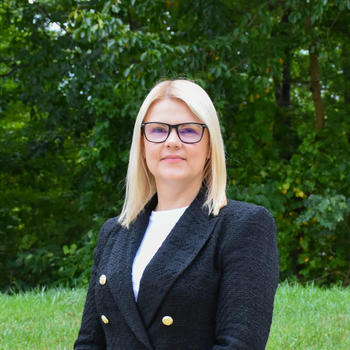In This Story

Private equity (PE) is known as a “high-risk, high-return” asset class. But as risk-averse institutional investors continue to up their stake in PE, private fund managers are expected to provide metrics that characterize the riskiness of their portfolios. Yet the lack of observable prices makes traditional measures of risk (such as standard deviation of periodic investment returns) entirely unsuitable.
How are PE managers responding to this paradox? According to Maria Nykyforovych, an assistant professor of accounting at Donald G. Costello College of Business at George Mason University, they are doing what they can (within the law, of course) to convert on-paper small losses into break-evens. As Nykyforovych and co-author Gregory W. Brown of UNC-Chapel Hill put it in their recent working paper, it’s a strategy of “loss avoidance.”
“To our knowledge, [this] is the first [paper] to document the management of realized deal multiples, not net asset values of unrealized portfolio holdings,” the authors wrote.
Working from an extensive data-set comprising deal activity for 1,038 funds during the years 1986-2018, the researchers spotted suggestive patterns in the multiples of invested capital (MOICs) for fully exited buyout deals. Their analysis revealed statistically abnormal concentrations of MOICs in the range of 0.95-1.04x (losses of .05 or less can be rounded up to 1.0x), compared to MOICs for unrealized deals.
Moreover, they saw that the abnormality was even more pronounced at times when PE managers were actively raising capital, so much so that the overall likelihood of a reported break-even MOIC declined by 62% after the next fund had been raised. This strongly implies managers were taking steps to minimize losses in order to reassure risk-averse potential investors. And they were entirely rational in doing so. Nykyforovych and Brown found that funds reporting a loss ratio of 15 percent raised, on average, $171 million less than those reporting 5 percent.
Nykyforovych emphasizes that the “loss avoidance” implicit in her results doesn’t imply ethical or legal breaches. It could be a fairly benign matter of mutual accommodation between PE executives. “This is very much a relationship-built business,” she says. “It is mostly the same companies doing business together, buying and selling companies from each other and to each other. Sometimes when the manager really needs that break, that exit, they could approach another manager and say, ‘Hey, I really need to sell this company and it needs to be a break-even.’ The other manager would agree, and it’s ‘I owe you one’.”
Still, she cautions this is all speculation. “Can you track it? No, at least not with the current data that are available.”
However they’re done, these slight adjustments might not be all that remarkable, if loss ratios were indeed an accurate measurement of risk. But further analysis by Nykyforovych and Brown found no reliable association between loss ratios and the standard deviation of investment multiple for a given fund.
And that’s not all—the researchers also found evidence suggesting that funds with more break-even exits delivered lower returns for investors. That could be because PE managers devoted too much time and money to avoiding losses, and not enough to maximizing the performance of more successful portfolio companies.
Nykyforovych believes her study is an object lesson in the possible dangers of metric-based myopia. Investors assign too much weight to loss ratios, and PE managers make crucial decisions accordingly, to the potential detriment of overall fund performance.
“The implication of that is that maybe the money managers of a pension plan are well-meaning, and they choose investments with low loss rates first, because that’s preservation of your retirement…But long-term, if that does not result in additional return every year, you’re not better off,” she says.
Narrowing one’s field of vision to a single figure certainly simplifies things, but it can result in distorted incentives for all concerned. Nykyforovych recommends that both institutional investors and PE managers ask themselves, “’Is loss ratio actually a good measure to use when we are assessing riskiness?’ It is a useful metric, but maybe not to the extent that everyone is currently using it.”
